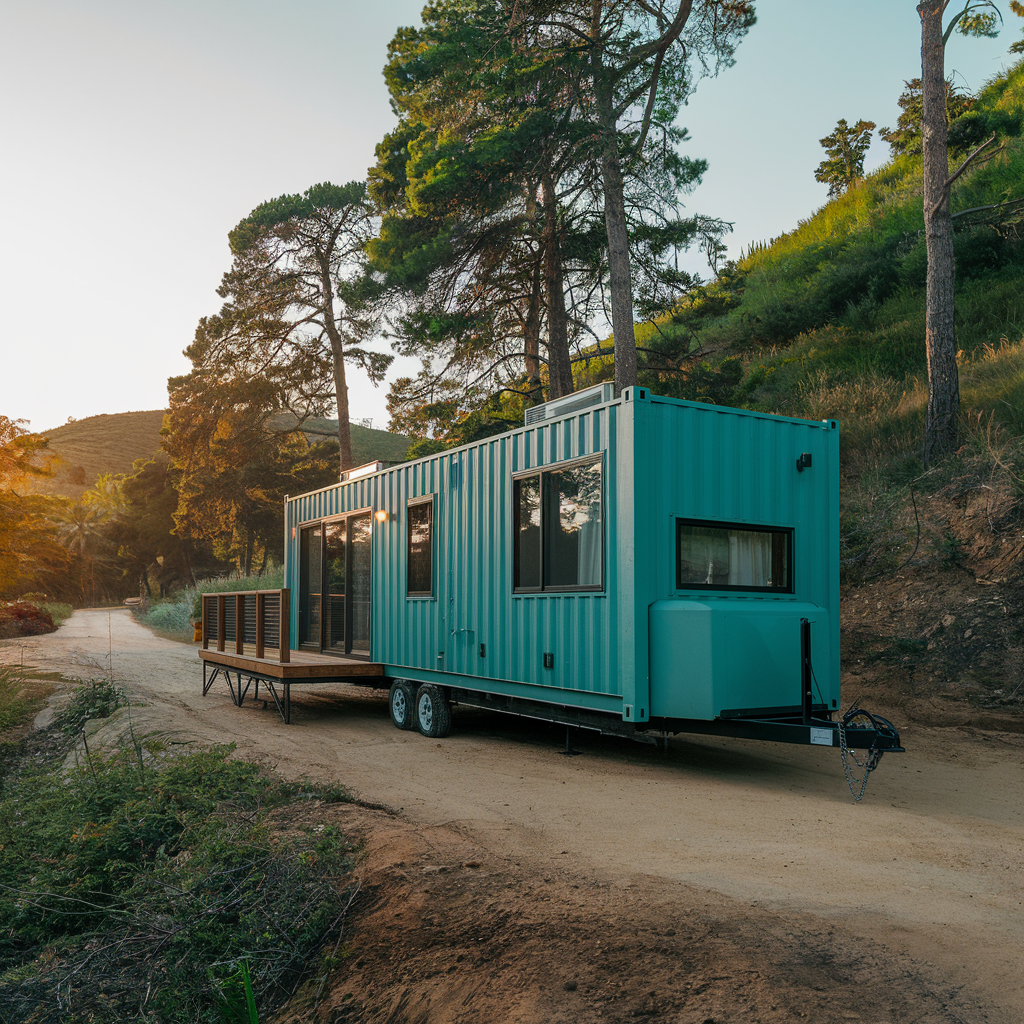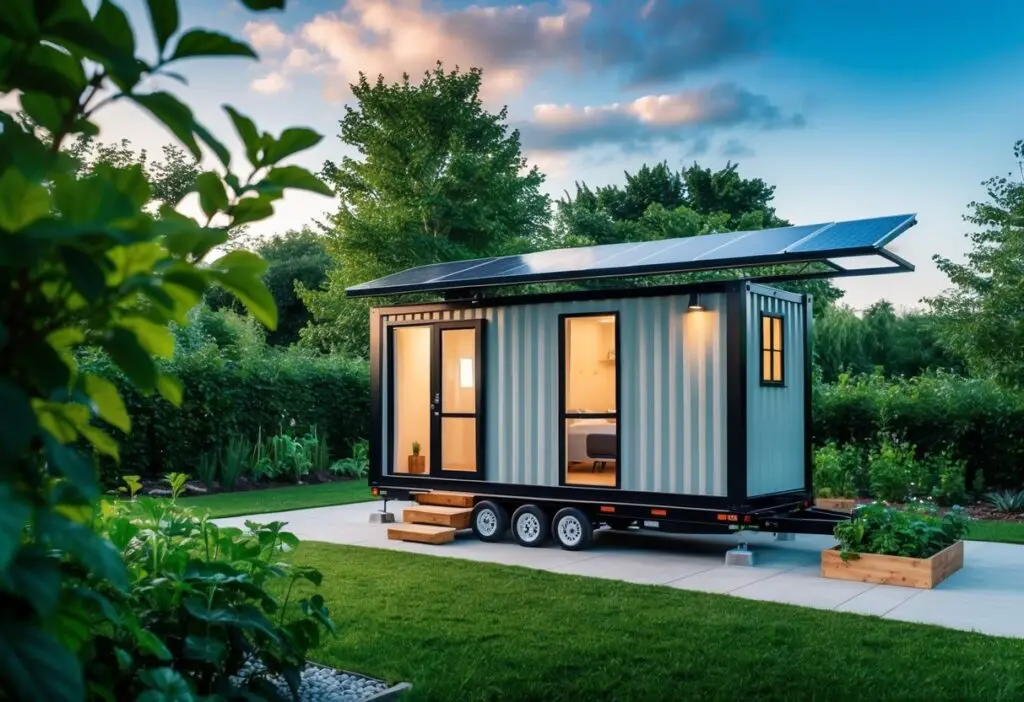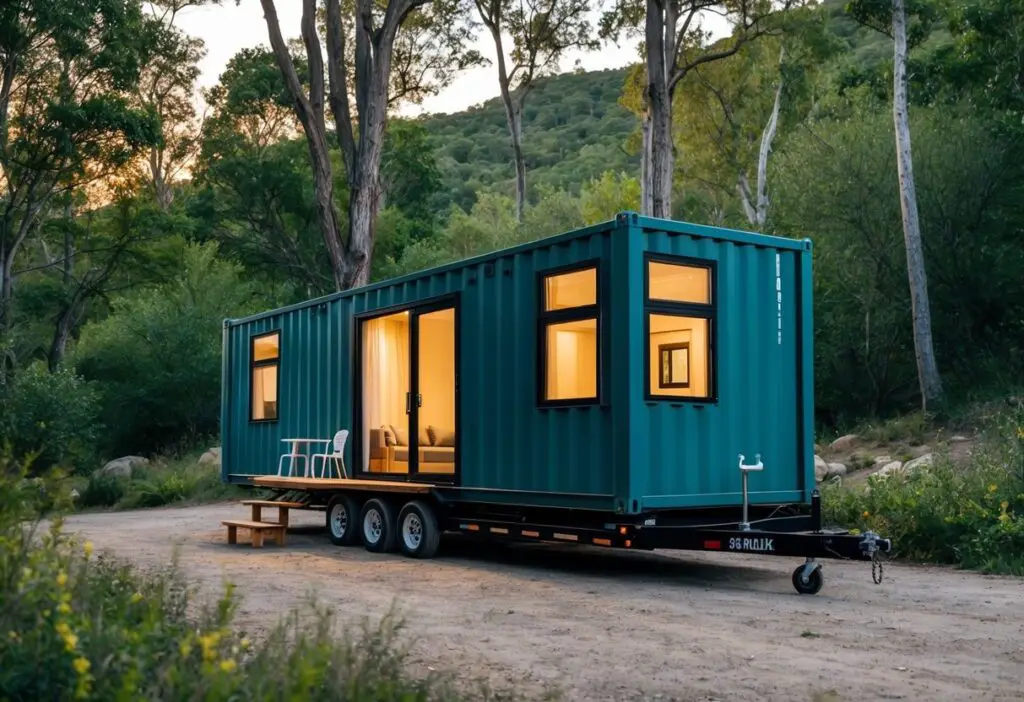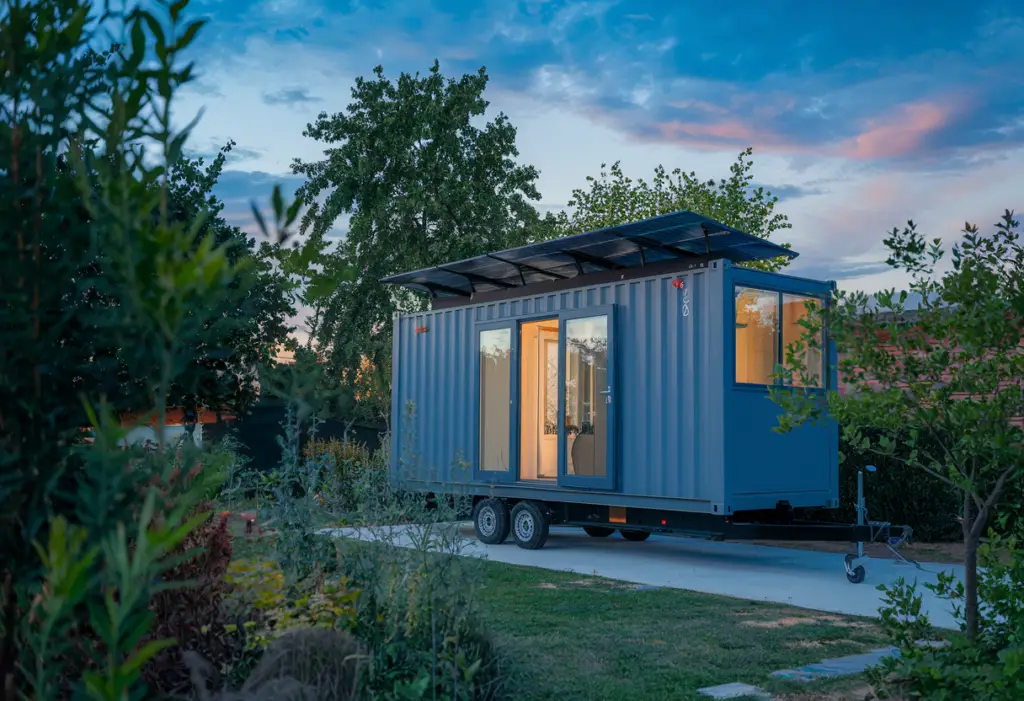Container homes on wheels are transforming the concept of mobile living, offering a practical and innovative solution for those seeking flexibility and a simpler lifestyle.
These homes provide the advantages of mobility without sacrificing comfort, making them an appealing choice for many individuals today.
As more people embrace the idea of minimalism and sustainability, the demand for these unique living spaces continues to rise.

These homes can be easily transported and customized, allowing individuals to create a living space tailored to their needs while retaining the ability to move at any time.
With advancements in design and amenities, container homes on wheels are becoming a viable alternative to traditional housing.
They are increasingly recognized for their eco-friendliness and efficiency, contributing to a sustainable future.
As this trend gains traction, various options are becoming available, catering to diverse tastes and budgets.
Container homes on wheels are not just a passing fad; they represent a significant shift in how people think about home and lifestyle.
Their growing popularity highlights a desire for independence and adaptability in modern living.
Design and Sustainability of Container Homes on Wheels

The design of container homes on wheels emphasizes both innovation and sustainability. By repurposing shipping containers, these homes offer a unique aesthetic while incorporating eco-friendly features and energy-efficient solutions.
Understanding these elements can inform choices for sustainable living.
Innovative Use of Shipping Containers for Mobile Living Spaces
Shipping containers are transformed into mobile living spaces, showcasing significant architectural versatility.
Their robust structure allows for various layouts, providing residents with the ability to customize their home.
Many container homes are designed to be modular, allowing for easy expansion or modification.
This adaptability is particularly appealing for those wishing to downsize or travel frequently.
Architects often incorporate large windows and open spaces, creating airy interiors while maintaining the aesthetic of industrial design.
The ability to move easily allows homeowners to enjoy the natural surroundings surrounding them.
Integrating Eco-Friendly Features and Sustainable Materials
Container homes often utilize eco-friendly features and sustainable materials to minimize their environmental impact.
Many builders focus on reusing materials, such as reclaimed wood and efficient insulation options, which contribute to sustainability.
Features like rainwater harvesting systems and composting toilets enhance living off the grid.
Additionally, integrating green roofs not only provides insulation but supports biodiversity by creating usable outdoor space.
This incorporation of sustainable materials significantly reduces the overall carbon footprint of these homes.
Energy Efficiency Solutions in Container Homes
Energy efficiency is a critical focus in the design of container homes on wheels.
Many incorporate solar panels, reducing reliance on non-renewable energy sources.
Solar energy can power appliances, lighting, and heating systems, making off-grid living more feasible.
Containers often benefit from high-quality insulation, which helps regulate indoor temperatures, reducing heating and cooling costs.
Energy-efficient windows are also crucial, allowing ample natural light while minimizing heat loss.
These solutions contribute to lower utility expenses, promoting sustainable living without sacrificing comfort.
Practical Aspects of Living in a Container Home on Wheels

Living in a container home on wheels offers unique advantages that cater to those seeking mobility, cost-effectiveness, and innovative living solutions.
Factors such as building codes, innovative plumbing solutions, and the adaptability of living spaces are essential considerations for potential residents.
Navigating Building Codes and Regulations for Homes on Wheels
Container homes on wheels often present challenges regarding building codes and regulations.
Different jurisdictions have varying rules that can affect stability, safety, and zoning.
Potential homeowners should start by researching local codes that govern mobile living.
It’s important to check regulations related to vehicle classification, weight limits, and required permits.
Consulting with local authorities can provide clarity on what modifications are necessary, ensuring that the home remains compliant.
Understanding the legal landscape is crucial, as failure to adhere to codes can result in fines or the inability to park in certain areas.
Staying informed about evolving regulations can also help adapt to future changes in mobile dwelling policies.
Cost-Effectiveness and Affordability Factors
Living in a container home on wheels is generally more cost-effective compared to traditional housing.
The initial purchase price of a shipping container is lower than that of a standard home, often ranging from $2,000 to $10,000.
This affordability can be a significant advantage for first-time buyers or those looking to downsize.
Additionally, container homes can be outfitted with energy-efficient features, further reducing monthly utility bills.
Homeowners often report lower maintenance costs, as shipping containers are durable and require less frequent repairs.
Financing options are also available for container homes, making it easier to acquire one without extensive upfront investment.
This unique approach to homeownership can provide financial freedom while still offering a personalized living space.
Portability and Mobility: Embracing a Nomadic Lifestyle
One of the most appealing aspects of living in a container home on wheels is the emphasis on portability.
By design, these homes allow residents to relocate as desired, supporting a nomadic lifestyle.
The ability to move without the hassle of traditional real estate transactions is a significant benefit.
Container homes are usually built on heavy-duty trailers, making them road-ready.
This design permits easy transportation to various locations, whether for temporary stays or long-term living arrangements.
The freedom to explore different environments—from urban settings to rural landscapes—enhances the appeal of mobile living.
Residents can adapt their surroundings according to personal preferences or job opportunities, ultimately fostering a dynamic lifestyle.

Innovations in Water and Waste Management
Innovative solutions for water and waste management are essential in container homes on wheels.
Space constraints necessitate efficient systems to ensure functionality.
Many container homes utilize composting toilets. These convert waste into usable compost and reduce the need for traditional plumbing. This approach not only saves space but also promotes environmental sustainability.
Rainwater harvesting systems are another valuable innovation. They capture and store rainwater for various uses, including irrigation and potable water with proper filtration.
Utilizing these technologies can lead to significant resource savings, making mobile living more environmentally friendly.
These advancements establish a sustainable foundation for living in a container home. They address essential needs while supporting an eco-conscious lifestyle.


Be First to Comment